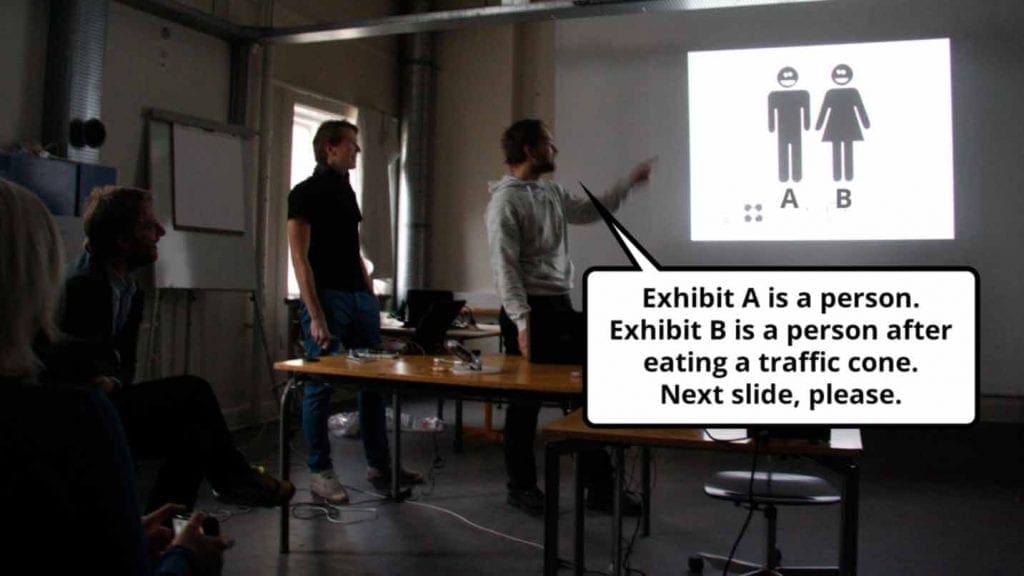5 Rules for Delivering a Better B2B Sales Pitch
You survived the proposal stage. You’re advancing to the final, in-person round. You’re on the slate to deliver your B2B sales pitch to decision makers.
Suddenly, it occurs to you: How are we going to win?
Few experiences are as bittersweet or brutally educational as losing a sales opportunity in the final round. To help you push your deals over the finish line, we’ve come up with five rules for better B2B sales pitches. We can’t promise you’ll get the deal if you follow these rules. But we can promise you’ll be in much better shape than if you don’t.
Rule #1: Do Your Research
A sales pitch is an interview, an audition, a test.
It’s imperative you do your homework. Take time to research everything you can about the prospect. Scour their website, and take notes on any third-party articles you can find online. Look into their competition and their industry landscape. Project yourself into their particular circumstance.
You should also do everything possible to learn what the decision makers want elaboration on. Do they want a definition of the deliverable, or a deeper look into the process? Are they invested in the proposal you sent, or just conceding their gatekeeper’s selections for the final round? Are they “Why,” “What,” “When,” or “How” people?
Send a few questions to get a list of must-haves for your presentation. It’s typically a bad sign if you can’t get answers from their team. To win a good client, you want to enter a dialog where everyone is engaged and responsive—not grasping for common ground or setting one-sided precedents.
Rule #2: Know the Space
When you get a big-fish prospect on the line, the sudden burst of adrenaline can be dizzying. Try not to get too caught up in the high. Before you drop everything, take a breath and make sure you’re capable of reeling it in.
In our experience, we’ve found the difference between success and (soul-crushing, heart-stomping) failure is being legit. If we know the space intimately, we win. If we don’t, we don’t.
People who understand a subject matter have a bearing, a dialect, a palpable confidence that’s near impossible to fake with short notice. In terms of advantages, your ability to exhibit expertise in the prospect’s space is crucial.

You’re each bringing a certain specialty to the conference room table. The goal for any good B2B sales pitch is to bridge the gap between those specialties. If you can have a productive back and forth about their industry, and convey understanding beyond cursory knowledge, then you’ll have much more of a chance to win the deal.
Rule #3: Present to Win
As strategic marketing consultants, we like to design visually appealing presentation decks for in-person meetings. We also concentrate on clarity and brevity. After we’ve mapped out a script and built an initial draft of the presentation, we work on fixing these common presentation failings:
- Too Much Copy: Nobody wants to watch you read from a PowerPoint slide. To combat any tendency to overload slides with text, first, identify the crucial message you want to convey on the slide. Then remove anything that doesn’t support that message. Keep deleting copy until you have to re-add something for clarity. That’s the sweet spot: exactly enough copy to speak to (rather than read to).
- Not Focusing on the Differentiator: You want to emphasize what makes you better than the nameless other firms presenting to this prospect. Focus on that difference. You want them to leave the room understanding that difference, and even better, using that difference as a benchmark when considering other vendors.
- Not Enough Time: Book a room, use a timer, and do a real-time run-through. Aim for 15 minutes under the allotted time to make sure you have time for discussion. Do not stop and analyze the presentation until after you’ve completed it. You need to understand the flow of the presentation and how long it takes to get through each section. We recommend recording it and reviewing afterwards, or at the very least, having a keen confidante in the room taking notes.
- Leaving No Flexibility: When you’ve done your practice run-through, discuss what worked, what was awkward, and what felt extraneous. Then adjust as necessary. Don’t be afraid to delete slides or drop examples from the presentation. If the situation calls for it, you can always add them off the cuff, which can help convey command of the subject matter.

- Audio-Visual Difficulties: You don’t want to have the best presentation deck of all time that can’t be shown in their conference room. Ask questions about projector hookups (e.g., HDMI, Mac, VGA), room layout, and presentation tools (e.g., clickers, pointers, audio) well before you arrive on site. Save the presentation file in multiple formats on multiple devices, just in case. You can even ask to arrive 15 minutes early to make sure you have a little wiggle room to deal with any unforeseen technical difficulties.
Rule #4: Assume Nothing
If we analyze B2B sales pitches that didn’t turn out as we’d hoped, we can usually come up with a list of false assumptions.
You won’t be able to remove all assumptions from your preparation. Knowing that, determine the assumptions that are critical to your presentation. Then do everything in your power to confirm or deny them. Ask questions. Frame them in the context of your wanting to provide value, ensure engagement, or promote productivity. Whatever it takes.
Like with rule #1, the prospect — specifically the decision makers themselves — should afford you some back-and-forth. Without that, assume you’re at a disadvantage. Either you’re not important enough for that critical dialog, you’re not the favorite, or every vendor is going in blind.
And none of those situations is ideal.
The non-critical assumptions should be treated in the style of your organization. For example, if you want to convey that you’re a company that cares, take the time to educate them about your expertise and suggested tactics. And if you don’t feel fully comfortable with an assumption, don’t commit to it in print. Instead, prompt the prospect in person, and respond to that.
Rule #5: Backing Out of a B2B Sales Pitch is OK
A sales pitch can be a big commitment—of time, energy, budget, and emotion. If you’ve made it to the final round, but feel a certain lack of respect or engagement, it’s OK to politely decline.
As I noted above, a sales pitch is an interview, an audition, a test. But it’s not a one-sided affair. You’re also interviewing, auditioning, and testing a potential client.
And if you feel like they’re not a good fit for your organization, it’s perfectly acceptable to move on.

Want More?
You can get more insight into B2B marketing and sales by subscribing to our B2B marketing strategies blog! If that’s your sort of thing, you can click on the button below to sign up for emailed updates.
Thanks for reading! We’ll see you soon.





